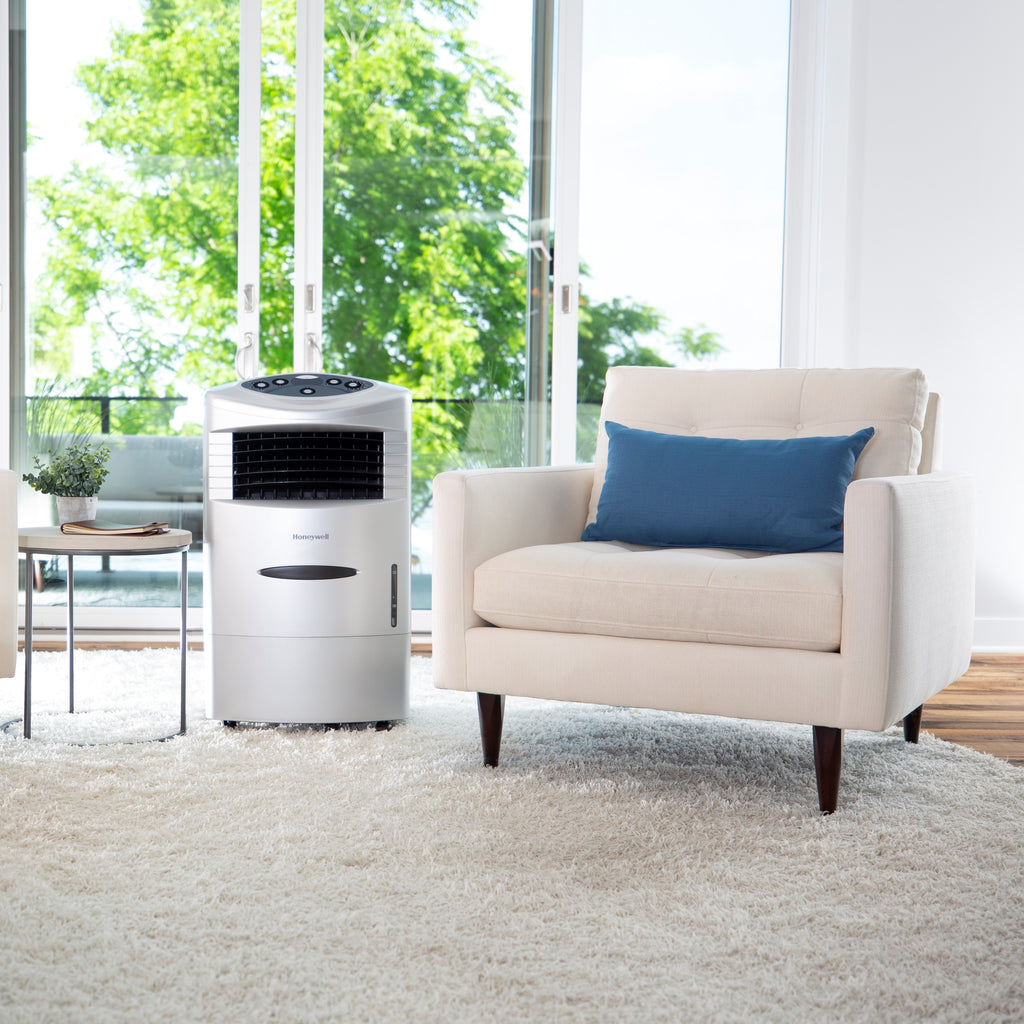
Swamp Cooler or Evaporative Cooler: Are They the Same?
Why do some websites refer to air coolers as swamp coolers, while others refer to them as evaporative coolers? How do they differ? What is their correct name?
The short answer is that they don’t differ at all. The long answer lies in the history and development of these coolers.
The Olden Days
Long before air conditioning or evaporative air coolers, people used simple fans. But since fans just circulate air around a room as opposed to cooling it, people came up with a solution that in essence worked with the same principle as a modern evaporative cooler. It was quite common to sleep on a porch (or with an open window in the house), hang out wet towels or sheets, and turn on a fan that would then cool air as it passed over the wet linens. This offered a natural, low-energy solution that provided the required relief from the heat.
The Evolution of the Evaporative Cooler

What’s one important thing that people seek on a hot day? A cool breeze. This is essentially what an evaporative cooler mimics: a cool, refreshing breeze. But best of all, it easily works both indoors and outdoors if you have an indoor/outdoor model.
Portable evaporative air coolers offer a unique cooling solution that combine elegance and style with efficiency and reliability. They appear to be quite intricate and complex, but their effective cooling process couldn’t be any simpler.
The Answer is Pure Science
Air coolers work through the natural water evaporation process. They have absorbent honeycomb pads inside the units that soak up water. As warm air is drawn in from outside, the air cools as it passes through the wet filter pads and causes the water to evaporate. The cool air is then blown out through a powerful fan. This results in effective cooling in the immediate vicinity, whether indoors or outdoors. This air, although cool, is humid, so it might add too much moisture in a humid environment like Florida. However, an air cooler would be a great option for those in drier climates.
In order for an evaporative cooler to work most efficiently, it depends on a constant supply of fresh air. This provides the airflow that is needed for the evaporative cooling process. In your home, the ideal place for an air cooler is near an open window or door. They may also be used outside (as long as it is an approved outdoor model). Once you have found the right spot for your cooler, all you need to do is simply add water to the tank.
Because cooling is created through the natural process of water evaporation, an air cooler's reservoir must never run empty. Maintaining the water supply is a crucial part of running an evaporative cooler.
How to Get the “Swamp” out of Your Cooler
When mechanical coolers were first created, they used Aspen pads (made of wood), which were inferior to the honeycomb pads used today. Among other issues, they created a moldy smell.
This moldy, musty odor was more common with previous generations of evaporative coolers, which is why they were coined “swamp coolers.” The swampy characteristics were just as prominent as the cooling feature. With the developments in modern evaporative coolers, the term “swamp cooler” has lingered but is becoming less and less popular. A neglected evaporative cooler that is not cleaned or properly maintained can create an environment that is more conducive for mold and bacteria growth, but if you follow the cleaning and deodorizing suggestions in your unit’s user manual, your evaporative cooler will cool efficiently without any swamp-like issues.
Portable Evaporative Air Coolers
The more fitting term for coolers that work by using the natural evaporative process is evaporative coolers, rather than swamp coolers, since evaporative coolers represent the current and future trend in the world of coolers. Remember though that these devices are essentially the same, and many still know them by the term "swamp cooler."
